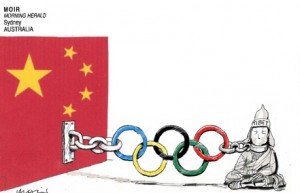The Scottish referendum and waves of secession movements — from Spain’s Catalonia to Turkey and Iraq’s ethnic Kurds — are working in different directions. More than half a century after World War II triggered a wave of post-colonial nationalism that changed the map of the world, buried nationalism and ethnic identity movements of various forms are challenging the modern idea of the inviolable unity of the nation-state.
Yet even as these sentiments pull on the loose threads of nations, in China, one of the most intractable issues in the struggle for unity — the status of Tibet — is poised for a possible reversal, or at least a major adjustment. The long-running but frequently unnoticed negotiations have raised the possibility that the Dalai Lama, Tibet’s spiritual leader, may be nearing a deal that would enable him to return to his Tibetan homeland. If it happens, it would end the Dalai Lama’s exile in Dharamsala, India — an exile that began after the Tibetan uprising in 1959, nine years after the People’s Republic of China annexed Tibet. More important, a settlement between Beijing and the Dalai Lama could be a major step in lessening the physical and psychological estrangement between the Chinese heartland and the Tibetan Plateau.
The very existence of the Tibetan issue bespeaks several overlapping themes of Chinese geopolitics. Most fundamentally, it must be understood in the context of China’s struggle to integrate and extend control over the often impassable but strategically significant borderlands militarily and demographically. These borderlands, stretching from northeast to the southwest — Manchuria, Mongolian Plateau, Xinjiang, Tibet and the Yunnan Plateau — form a shield, both containing and protecting a unified Han core from overland invasion. In attempting to integrate these regions, however, China confronts the very nature of geographic disintegration and the ethnic identities in these restive borderlands, which have sought to resist, separate or drift away from China at times when weak central power has diminished the coherence of China’s interior. China and Tibet

